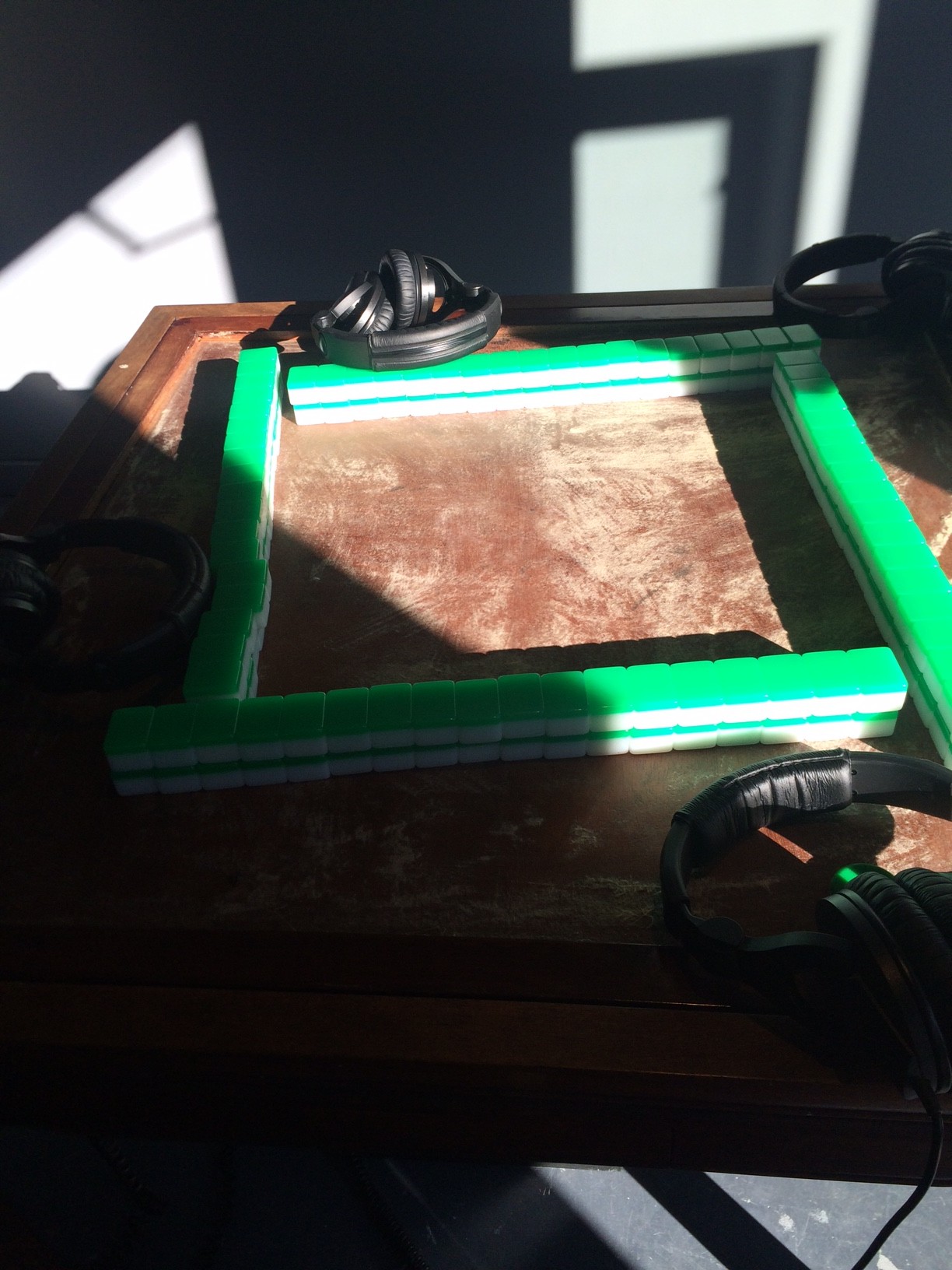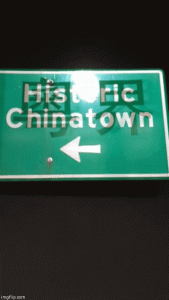Listening for an Intelligible Cantosphere
A found street sign pointing west for “Historic Chinatown” welcomes visitors into Centre A.
Acting as a backdrop for shadow projections of Chinese characters, the English sign tells the story of a dying, if not already dead, Chinatown. Meanwhile, the characters 越 and 粵 flash interchangeably beside the character 界, together forming the two phrases in the exhibit’s name, 越界 (transgression) and 粵界 (cantosphere). Not exactly neon lights, this flashing Chinese sign suggests activity, a sense of liveliness, even if not all visitors can understand its meaning.
Centre A, located in Vancouver’s Chinatown, is currently showcasing the work of Hong Kong Exile, who created 越界/粵界 (transgression/cantosphere) in collaboration with linguist Zoe Lam and artist Howie Tsui. Cantosphere is Lam’s neologism, articulating a culturally distinct and linguistically vibrant Cantonese-speaking diaspora across Guangdong province, Hong Kong, and here in Chinatown. The motivation for the exhibit is to create a space for resisting Mandarinization in these three regions.
The most prominent display in the exhibit, a pun generator booming in the back, rotates proverbs to the sound of mah-jong tiles shuffling across a game table. Language is likened to a game, requiring coordinated effort to remember, perform, and master its rules.
Such is the community play that visitors can partake in at the mah-jong table, stationed at the front of the exhibit. Seated here, participants are invited to listen to an audio loop of Zoe Lam gently grilling Howie Tsui—a heritage speaker of Cantonese—on correct pronunciations of lexical tones.
Like Howie’s Cantonese, the mah-jong table is sufficient but incomplete. In the first place, four players are needed for mah-jong to work. The table is also missing a cloth overlaying the wooden table, as well as four drawers in which gambling money can be stored. Without the cloth, tiles might fail to glide smoothly across the wooden table. Without drawers, the game is stripped of its high stakes and relevance to people’s economic lives. While these missing details are not necessarily essential to the game, the recording playing from the headphones at the table re-iterates the importance of getting details right.
At one point in the recording, Howie remarks to Zoe, “That’s about as -ng as I can get!”
“It’s intelligible,” assures Zoe.
The vulnerability in this exchange relieved me of initial doubts I had about the exhibit.
Having lost approximately two vernacular dialects to Mandarinization, and being a heritage Mandarin speaker in the Anglo-Canada context, I can’t help associating any rigorous process of correcting pronunciation with linguistic imperialism. Sing-song pronunciation exercises used to teach me English ‘as a Second Language’ in elementary school have stigmatized traces of ‘Chinese’ in my speech. Getting details right, in my case, came at a cost.
While asserting cultural legitimacy, does insisting on correct pronunciation of lexical tones simultaneously police how cantosphere should sound like? Does this process leave behind Toisan and other village dialects spoken by the first overseas Chinese in Chinatown?
Neither the table nor recording are, however, pedantic. Participants aren’t required to know Cantonese or the rules of mah-jong to find the set-up intelligible. Compared to the clanking sounds and protest chants coming from the pun generator, the mah-jong table provides a much quieter auditory sphere for resisting cultural loss. In order to fully take in Howie’s show of humility and Zoe’s patient response, listeners must tune out louder parts of the exhibit—a challenge emblematic of cantosphere’s survival under restrictive language policies in Guangdong. 越界/粵界 ‘s acknowledgement of this intimate emotional register therefore also highlights everyday acts of sitting, speaking, and playing as vital to cultural resistance and survival for Chinatown’s cantosphere. These acts, by seniors and youth alike, insist that neither Chinatown nor Cantonese are going away.
Works Cited
“Current Exhibition.” Centre A. n.p., n.d. Web. 10 Mar. 2015.


